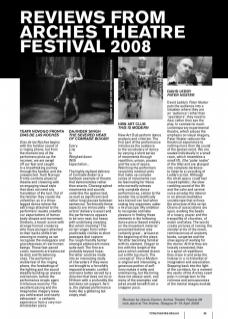David Leddy’s Pater Noster puts the audience into a situation where they are an ‘audience’ rather than ‘spectators’: they need to hear rather than see the play. In contrast to much contemporary experimental theatre, which places the emphasis on visual imagery, Pater Noster reduces the theatrical experience to nothing more than the sound of the spoken word. We are seated individually in a small room, which resembles a small lift, (the ‘pater noster’ of the title) and are plunged into complete darkness to listen to a recording of Leddy’s script. Although the small space could feel claustrophobic, the slow rumbling sound of the lift and the calm and serene voice envelop the listener in an almost meditative soundscape that echoes the structure of the script. Chains of associations are spun, evoking the beads of a rosary, prayer and the tranquillity of churches, of water and lakes. The words create pictures of rowing, the slender arms of the rower, reminiscences of anatomy books, surgeries and the slow agony of waiting for the doctor. At first they are loosely connected, then in a spiral of repetitions they close in and wrap the listener in a rich blanket of imagination and association. Stepping back into the light of the corridors, for a moment the vaults of the Arches seem pale in comparison to the richness and sensuousness of the mental images evoked.

